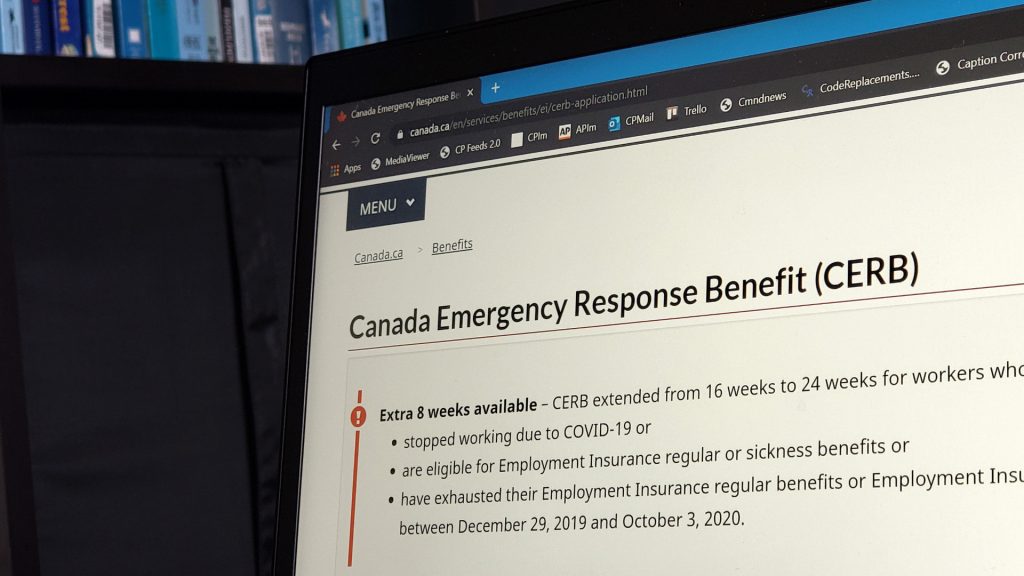
Despite high levels of job loss during the early pandemic in 2020, there was a decrease in poverty levels in Canada, which experts attribute to income supports like the CERB, but note some people who needed the support did not qualify.
Katherine Scott, a senior researcher with the Canadian Centre for Policy Alternatives, analyzed Statistics Canada data, which showed an 18.9 per cent reduction in poverty between 2019 and 2020 in the country.
“Poverty, looking back, across the board across, all the provinces actually dropped quite sharply. In fact, the scale of the drop was certainly the largest in past decades,” Scott told CHEK News in an interview.
“Bringing in income security measures to support people who lost income and employment as a result of the very necessary public health restrictions that were brought in to manage the pandemic, but the upshot was, there was a very sharp drop in poverty in 2020.”
Poverty declined btw 2019 and 2020 in every province—the largest drop in MB and BC, the smallest in NL. MB and NS still have the highest levels of poverty and AB the lowest. But BC’s standing has much improved, moving from 7th to 2nd best in the space of a year. 2/7 pic.twitter.com/kWnPRzGIbu
— Katherine Scott (@ScottKatherineJ) August 15, 2022
Scott notes the reduction in poverty varied between provinces, as each province brought in different measures.
B.C. had the second highest reduction in poverty across the provinces, moving the province from seventh to second in one year in terms of fewest people living in poverty.
However, Scott notes this reduction in poverty was not seen by all Canadians, and Canadians with disabilities were less likely to qualify for pandemic supports.
“One of the features of the pandemic programs that were bought brought in back in 2020, was that it was largely targeted to folks who had lost employment and income related to job loss or reduction in hours,” Scott said. “People with disabilities, a large proportion of whom, of course, rely on social assistance, received very little support as they faced much higher costs of living.”
Bill Adair, executive director for Spinal Cord Injury Canada and a person with a disability, says people with disabilities make up 22 per cent of the population between the ages of 15 to 64, and many of them did not qualify for the supports during the pandemic.
“In particular, the CERB benefit, which was $2,000 a month, and essentially the Government of Canada recognized that as a reasonable living income for people,” Adair said. “And of course, people with disabilities who are on benefits don’t make nearly that much a month, depending on the province or territory they’re in, it may be between maybe between $1,000 and 1,800 a month.”
On top of not qualifying for the benefits, Adair, who also serves on many organizations at federal, provincial and local levels including Disability Without Poverty, notes people with disabilities often have costs that non-disabled people do not have, and those increased during the pandemic.
“These are things such as acquiring assistive devices that aren’t covered by government programs, out of pocket medical expenses, additional personal support worker costs, and that’s when there’s not a pandemic,” Adair said.
“And of course when there’s pandemic there were additional costs that people with disabilities face and especially people living in the community, things such as personal protective equipment, they couldn’t go grocery shopping, so they had to have pay for the delivery, additional cost for transportation would be some examples.”
According to a 2018 Government of Canada report, people with disabilities made up 30 per cent of all people in deep poverty in Canada, but Adair says there are some things the government can do in order to address the needs of people with disabilities living in poverty.
“There needs to be in an increase in the benefits provided by the provinces and the territories, and as the Government of Canada introduces the new Canada Disability Benefit, it needs to be introduced in a way where the provinces and territories agree they will not claw back on the benefits they’re providing,” Adair said.
“And as these programs are being developed and implemented, they need to take into consideration the local cost of living. So how much a dozen eggs costs in Iqaluit is very different from dozen eggs in Montreal.”
From the federal government, Adair says the Canada Disability Benefit needs to be rolled out quickly.
“The work on creating the the Canada Disability Benefit needs to be accelerated, it needs to move quickly, we need to get money into the hands of people with disabilities living in poverty,” Adair said.
“There will be some debate in the future as to what that dollar figure might be, but it should never be below $2,000 a month, because that’s what Government of Canada put out as the amount paid through CERB. But we also need to take into consideration the additional costs people with a disability face and experience.”
Adair also said the government needs to have “decision makers” addressing the needs of Canadians with disabilities. During the pandemic, he says Carla Qualtrough, minister of employment, workforce development and disability inclusion, worked with a Disability Advisory Group to make recommendations for disabled Canadians.
“We actually provided recommended a dollar figure, and the minister represented this to government, but they did not pick up on it,” Adair said.
“There needs to be increased awareness across the the government of the day about the importance of considering people with disabilities. It’s not good enough to have a minister who understands what the needs are, who has an advisory group, who was listening to the advisory group, but others in positions to make decisions, such as the Minister of Finance, such as the Prime Minister, need to understand.”




